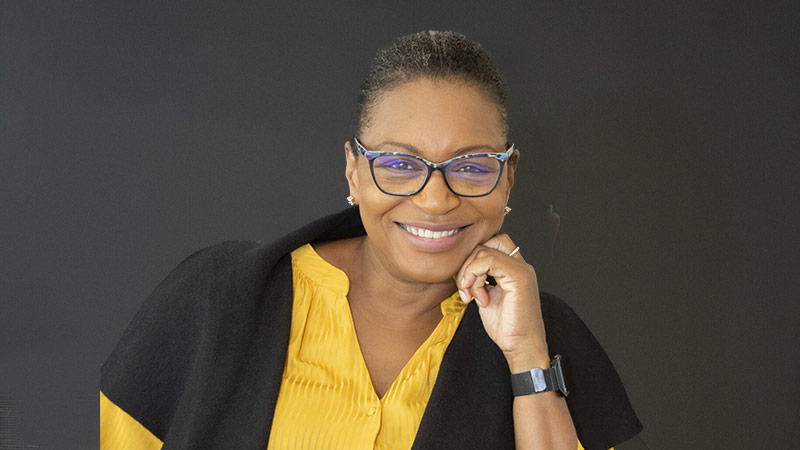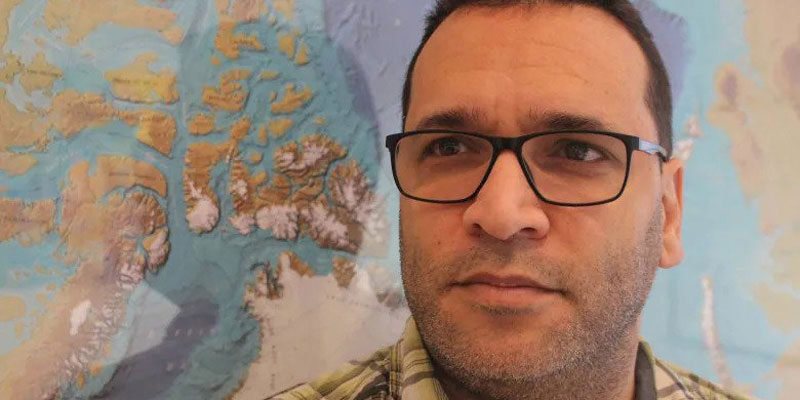Hidden histories and love letters: A conversation with Dr. Claudine Bonner
Author: Kayla Cormier
Posted on Mar 26, 2025
Category: UNB Fredericton , UNB Saint John

Interview by Graham Nickerson
Africville was more than its destruction—it was a vibrant, self-sustaining community with deep roots in Black Nova Scotian history. In a thought-provoking conversation, Dr. Claudine Bonner and UNB PhD candidate and public historian Graham Nickerson explore the power of reframing Africville’s legacy, the impact of environmental racism and the urgent need to preserve Black histories before they fade.
Last month, Dr. Claudine Bonner, Canada Research Chair in Racial Justice and African Diaspora Migration in Atlantic Canada, was guest lecturer for the University of New Brunswick’s (UNB) Department of Historical Studies’ 9th annual Black History Month public lecture. In “Addendum to a Love Letter—Reframing the Single Story,” Dr. Bonner highlighted the resilience and agency of Africville's residents despite systemic neglect and marginalization.
Africville, a small, predominantly African Nova Scotian community in Halifax, existed from the early 1800s until the 1960s. Founded by Black Nova Scotians, many of whom were self-emancipated African Americans who crossed the lines and joined the British during the American Revolution and the War of 1812, Africville faced considerable neglect from the city, which failed to provide essential infrastructure and services.
In the 1960s, Africville was demolished as part of an urban renewal plan, displacing the people and families who called it home. This act has since been recognized as a significant injustice, and in 2010, the Halifax Regional Municipality issued a formal apology and established the Africville Heritage Trust to commemorate the community's legacy. Africville remains a powerful symbol of Black Canadian identity and the struggle against racism and social injustice.
Graham Nickerson is a public historian of Black history in the Maritimes and a PhD candidate at UNB, whose research focuses on Black Loyalists in New Brunswick and Nova Scotia.
Nickerson spoke with Dr. Bonner, who is also an associate professor in the department of sociology at Mount Allison University and former inaugural vice-provost for equity, diversity, and inclusion at Acadia University. They discussed their specialties and research interests, resulting in a meaningful conversation that explored broader themes of Black displacement, Black erasure and environmental racism.

Graham Nickerson (GN): You began your Africville lecture by challenging the dominant narrative. How did you approach reframing this history?
Claudine Bonner (CB): I'm almost uninterested in the destruction part of the story [of Africville] because, as you mentioned, we focus on this moment in time as if that's the only part worth telling. I prefer stories that have beginnings, middles and ends, don’t you? I approached this research by asking myself what were the questions I had when I first heard about this community, and after reading the available literature, what did I still want to know? What does the beginning of this story look like? Who were the people who founded this community? What do we know about community life in the period before the City of Halifax began its encroachment, starting with the Intercolonial Railway tracks which were built through the community in the 1850s?
How can we discuss Africville in a way that conveys that what happened wasn't an anomaly, as you said, but was really a result of events that unfolded for well over a century before the community was destroyed?
GN: Yes, your work reframes the story as the growth and evolution of a vibrant community and maps out the community that lived there through the early years. So much has been written about the razing, but the origins of the community are virtually unknown to anyone who has not actually visited the museum now located on the site of the old community.
Your discussion of Africville’s location tied it to a broader pattern of environmental racism in Black communities. Can you expand on that?
CB: You grew up in Shelburne and are aware of the issues with the dump. You can discuss Guysborough and the dump. You can mention the Avenue (Dartmouth) and the dump. You can address Africville and the dump. Why is this? How is it that we always seem to find White communities creating blight around poverty and Blackness? These things are not accidents in history—they don’t just happen. They arise out of discriminatory policies and practices including a lack of political power and influence within the communities themselves.
GN: It brings to mind the old adage, ‘On the wrong side of the tracks,’ which refers to the side of the rail line where impoverished people live. In Shelburne, the old rail line literally bisects the White and Black communities. These tracks and other infrastructure were often developed on Black properties as those communities could not challenge the decisions.
That brings up another issue—how space and geography contribute to the erasure of Black communities. What happens when we lose those spaces?
CB: Earlier we were discussing old family photos and our inability to identify the people in them. The PEI Black community that once thrived has mostly become White (through intermarriage over time). They possess an extensive collection of photographs, and are aware of their Black ancestry, but they lack information about it. It’s not even distant ancestry; it's more like, just two or three generations ago. While community members continue to work to recover this history, much has essentially been erased. That’s a problem. We lose those spaces, which adds to the invisibility of Black life and experience. It sometimes feels like we’re forever in recovery mode.
Your work often engages with oral histories. How critical is that in counteracting these patterns of erasure?
CB: That's why I'm grateful for the times I get to talk to people, especially Elders, because we never know how long they'll be around. Those women are amazing! Oral histories allow us to navigate the pain that comes with erasure. Those of us who haven't experienced it have no clue how deep the pain can go. I believe that just being open to navigating or willing to traverse the pain is so crucial for us to truly hear their stories, and, like you said, to counteract patterns of erasure.
Many of these themes—Black displacement, environmental racism, racial passing—extend beyond Africville to Black communities across the Maritimes. How do you see these connections?
CB: The African Nova Scotian communities are located on the outskirts of whatever towns existed, in spaces predominantly occupied by White people. The same is true for the Indigenous communities. The Mi'kmaq communities are sometimes adjacent to the African Nova Scotian communities, yet both remain separate, right? Across the Maritimes we have a multiplicity of once-vibrant communities destroyed or decimated by these issues. They are clear examples of a history of systemic inequalities where marginalized communities are rendered invisible and bear the brunt of environmental hazards and other social injustices.
You’ve done extensive work examining historical documentation of Black communities. What challenges do you face with that?
CB: One of my upcoming projects is to explore and discuss how these stories are passed down in various contexts. I know Sierra Leoneans who currently live in Nova Scotia and immigrated here recently, in the last decade or two. They tell me that while attending school in Sierra Leone, they learn all about Nova Scotia. However, in Nova Scotia, we don't learn about Sierra Leone in the official curriculum—we are therefore dependent on family and community historians to preserve this history.
GN: This speaks to how the country of Sierra Leone views the Black Loyalists—they are part of the founding myth. Up until recently, very little public history depicted the Black community's historical presence or ways of being. Few academics were doing serious research in the field. As a result, neither Black nor White people appreciated the legacy and centrality of Black Loyalists in their time, and what evolved instead was a narrative of disenfranchisement.
If you could tell younger generations one thing about preserving Black history, what would it be?
CB: Your history matters! Your ancestors matter! If you don’t document it, it will fade away. There’s still so much work to do. We must proactively record our histories—not just the major events but the everyday lives, the details and the stories that add depth to those histories. Every time an Elder passes without being interviewed or a family loses its connection to its past, we lose another piece of ourselves.
Where can people find your work?
CB: You can find a list of some of my academic publications through Mount Allison. I have also contributed to book chapters and have an edited collection forthcoming about the Black press in Canada. Additionally, I wrote the foreword for A Love Letter to Africville. My research continues, and there’s always more to uncover.
